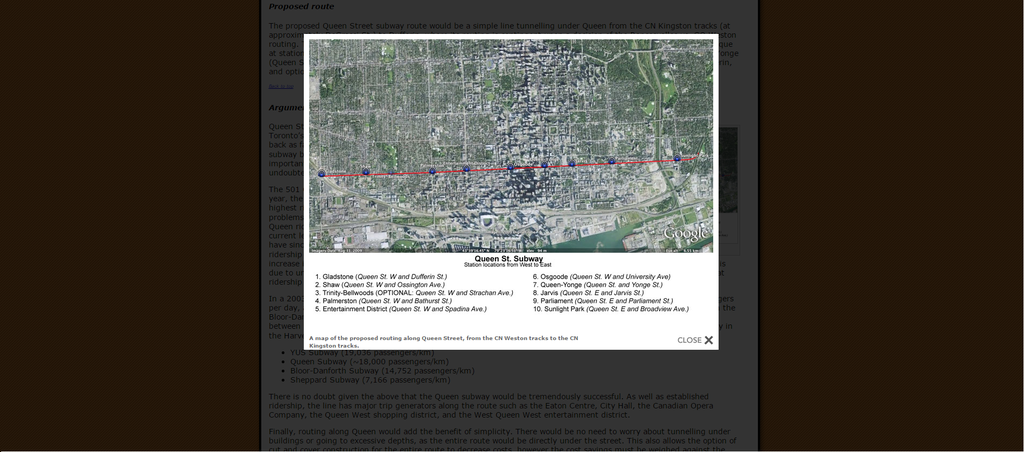BurlOak
Senior Member
Exactly what I imagined. He had rails and tie pre-constructed to speed installation. Gromit is non-unionized too.
The only thing I disagree with you is that an 8 to 10m deep station would take the same time and same cost to construct as a 15 to 20m deep station. I believe this is where the savings would come from.
Ventilation may be a bit cheaper for a shallower tunnel, and it would be more convenient to riders with faster time from street to track - but these are smaller factors. What I would like to know is how long did it take to construct a typical station in the 1950's on Yonge or Spadina, and how long did it take to construct one now on the Spadina extension. I think the one from the 1950's can be improved on with modern techniques (i.e precast tunnel components that can be loaded immediately and not require a few weeks to reach adequate strength). The station on the Spadina line is about as good as you can get. My quick guess would be that the station construction time would be cut in half and cost reduced by a third.
The only thing I disagree with you is that an 8 to 10m deep station would take the same time and same cost to construct as a 15 to 20m deep station. I believe this is where the savings would come from.
Ventilation may be a bit cheaper for a shallower tunnel, and it would be more convenient to riders with faster time from street to track - but these are smaller factors. What I would like to know is how long did it take to construct a typical station in the 1950's on Yonge or Spadina, and how long did it take to construct one now on the Spadina extension. I think the one from the 1950's can be improved on with modern techniques (i.e precast tunnel components that can be loaded immediately and not require a few weeks to reach adequate strength). The station on the Spadina line is about as good as you can get. My quick guess would be that the station construction time would be cut in half and cost reduced by a third.


